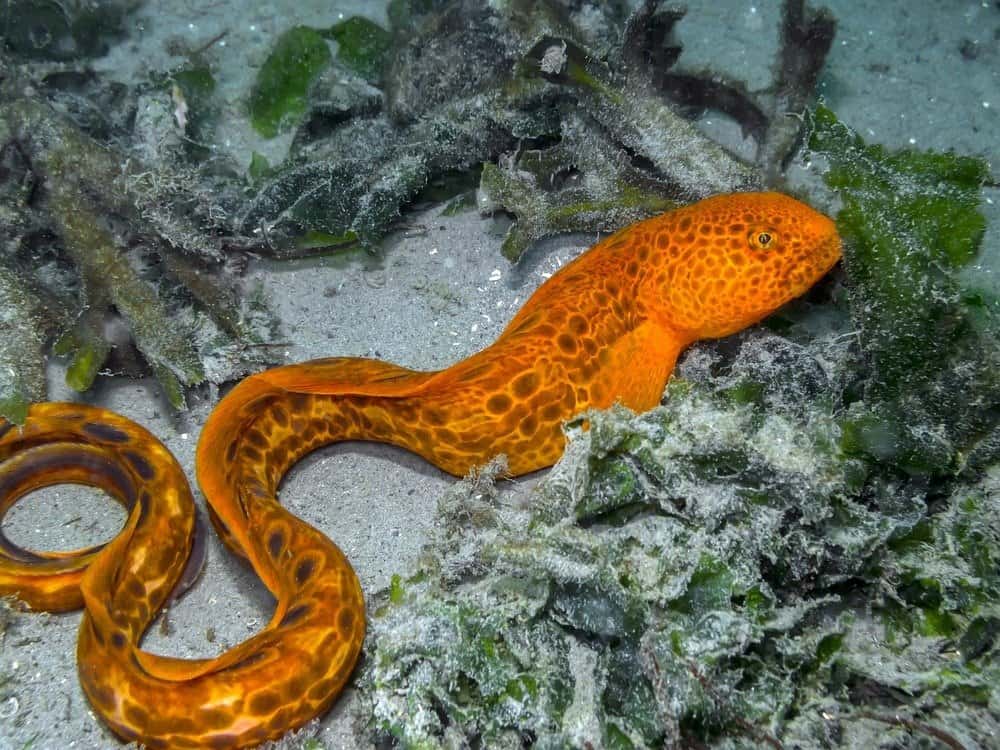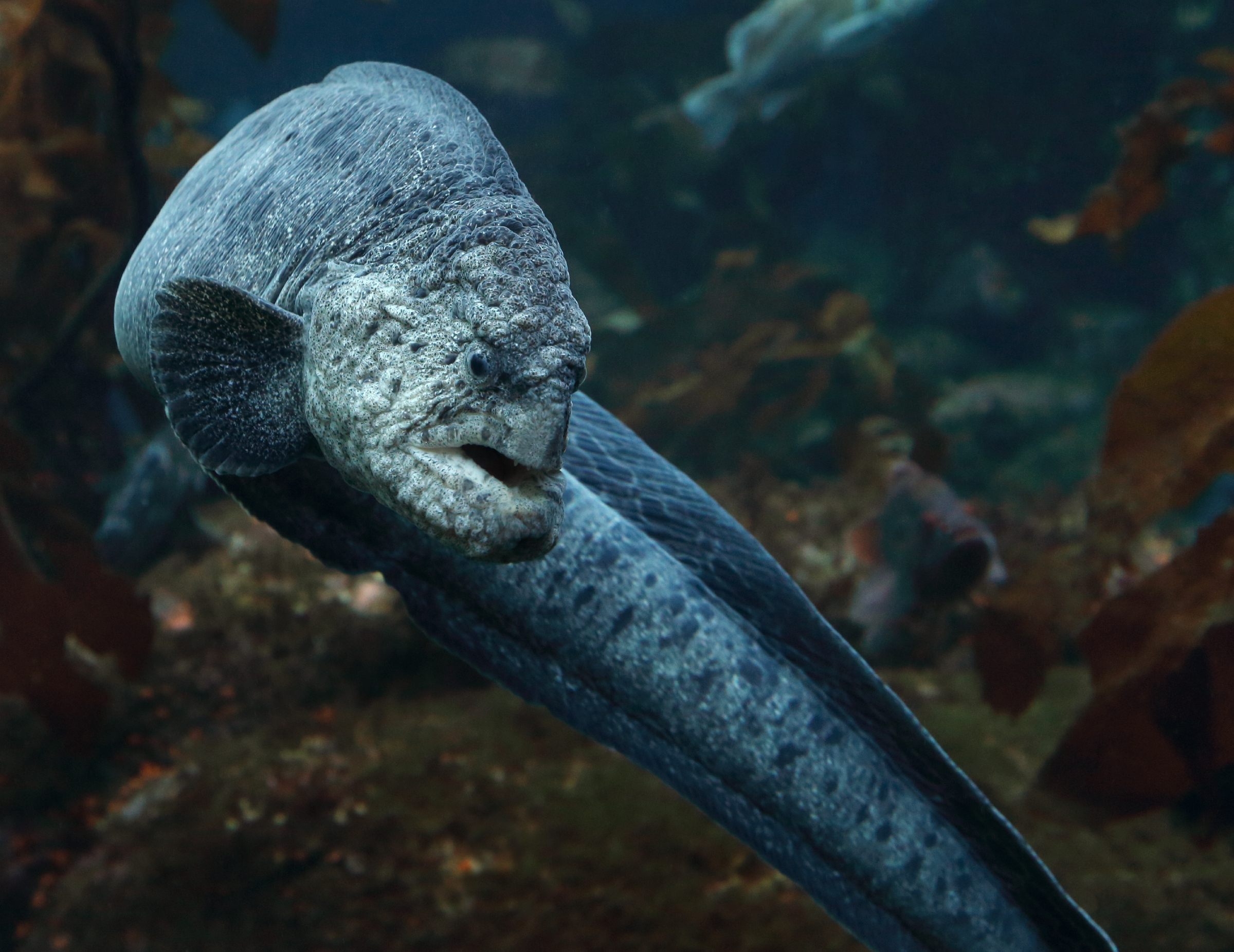
Learn more interesting facts about the wolf-eel's life history on the Monterey Bay Aquarium's species page.

Once you get past their strange face and head, the body of the Wolf Eel just keeps on going in thick muscular waves of tail that can stretch nearly 8 feet behind them.
#LARGE WOLF EEL FULL#
Until they hatch, egg masses are constantly protected by one or both parents. Named for their mouth full of sharp teeth and powerful jaws, Wolf Eels are able to crush large crabs, urchins and shellfish with a single bit. This species strong, heavy jaws are perfectly designed for eating crunchy, shelled invertebrates such as sea urchins and crabs, as well as other fish. A bite from the jaws of a wolf eel can cause considerable damage, however the species has a gentle reputation among divers: once coaxed out of its hiding place by the promise of hand-fed food from divers, an individual may readily emerge to greet other divers. Its range extends from Northern Baja California north to the Aleutian Islands, Alaska, and east and south to the Seas of Okhotsk and Japan. The wolf-eel is a slow-moving, reclusive fish that hides away near the sea bottom in crevices and caves, often using an individual location as a semi-permanent den. Juveniles are orange and more conspicuously spotted this colouring fades as they mature. Both are mottled with dark spots surrounded by pale rings, and the degree of mottling tends to increase with size. This species differs from true eels, because it has paired gill slits and pectoral fins, and can grow up to 7 ft 10 inches in length.

Despite not being a true eel, the wolf-eel's common name succinctly sums up its long and narrow body, rather vicious-looking snaggly teeth, and impressive size (it can reach 2.5 m long!) While both male and female have large heads tapering into elongated bodies with long anal and dorsal fins, they are readily differentiated as the female is darker and brownish in colour, while the male is whitish-grey male and has a bumpier, puffier head with a bulging forehead and large jaws. The wolf-eel is a distinctive fish unrelated to other 'true' eels it instead belongs to the wolffish family ( Anarhichadidae).


 0 kommentar(er)
0 kommentar(er)
